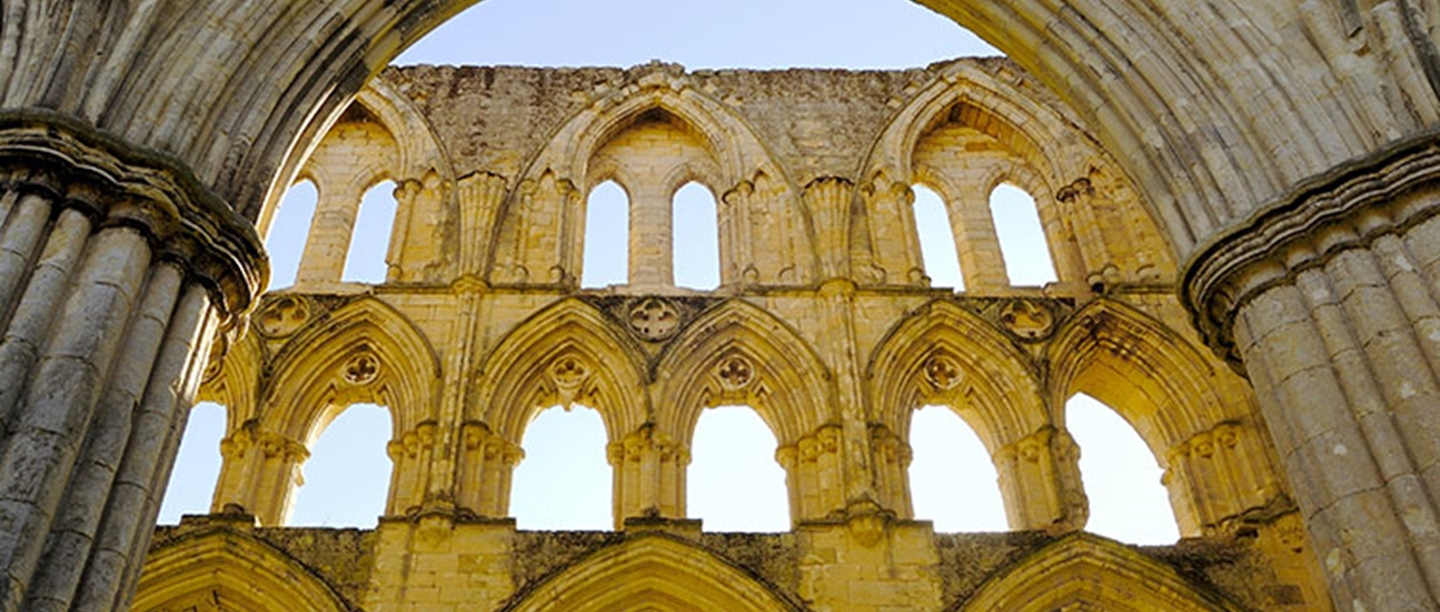
English Heritage historian Dr Michael Carter explains the significance of his new discovery in the archives of Rievaulx Abbey, which illuminates one of the darkest chapters in the abbey’s history.
‘Everywhere peace, everywhere serenity, and a marvellous freedom from the tumult of the world.’ This description of Rievaulx Abbey by Aelred, the monastery’s saintly abbot between 1147-67, still resonates with the thousands who visit the monastery each year.
But Rievaulx’s peace and tranquility was shattered in the autumn of 1322 when war between England and Scotland brutally intruded into the paradise of the cloister.
A northern powerhouse
Rievaulx Abbey was founded in North Yorkshire in 1132 by reforming Cistercian monks. The abbey’s magnificent ruins are enduring evidence of the piety of its monks.
As well as being a place of sanctity, the abbey was also an important political and economic player.
The late 13th and early 14th centuries were marred by bitter warfare between England and Scotland. The warlike Edward I (1272-1307) of England was so ruthless in his attempts to suppress Scottish independence that he was later known as the ‘Hammer of the Scots.’ Like other English monasteries, Rievaulx was called upon to help his campaigns north of the border.
Detail of a miniature of rioters pillaging a house in Paris. Via the British Library Catalogue
Rievaulx on the frontline
The fortunes of war changed dramatically when the English army of his son, Edward II (1307-27), was routed by Robert the Bruce (1306-29) at the Battle of Bannockburn in 1314. Northern England was left defenceless and open to invasion by the Scots.
Monasteries were not spared from the barbarity of the ensuing campaigns. Fountains and Jervaulx, Cistercian abbeys in Yorkshire, were badly damaged during Scottish raids in 1318-19. In 1322, Edward II’s army brutally sacked Melrose Abbey in the Scottish lowlands, even desecrating the high altar.
It was soon to be Rievaulx’s turn to experience the horrors of warfare.
The Scots invaded northern England and on 14 October 1322 defeated the English army at the Battle of Scawton Moor, also known as the Battle of Old Byland. This was only a few miles from Rievaulx, and even closer to Byland Abbey, another great Cistercian house.
Edward II was sitting down to a fine dinner at Rievaulx when he heard news of the defeat. One medieval source describes how ‘being ever chicken-hearted and luckless in war’, Edward hurriedly fled the abbey, narrowly escaping capture by the Scots. The king abandoned the royal treasure at Rievaulx, which was seized by the victorious Scots. The abbey was also pillaged.
New evidence uncovered
The sacking of Rievaulx is recorded in a number of medieval sources, but there was apparently no documentary evidence from Rievaulx itself of the traumatic events of October 1322.
However, my research into the history of the abbey led to an exciting new discovery earlier this year. A contemporary annotation in a manuscript from the abbey’s library records that on the feast of St Callixtus (14 October) 1322 the Scots despoiled and damaged Rievaulx, carrying away ‘books, chalices and the sacred ornaments of the monastery.’
The annotation occurs in a beautifully decorated early 13th-century copy of Roger of Howden’s History of England. This annotation appears on the same page as one marking the foundation of the abbey, leaving little doubt as to the significance of the event to the abbey’s community.
The Scottish wars had long-lasting effects on the abbey. In the mid-14th century, the northern English Cistercian abbeys complained to the king about the severe damage caused by the Scots to their estates. In 1326, the abbot of Rievaulx was among the ambassadors sent by Edward II to negotiate with the Scots, a reminder of the enduring social and political importance of the abbey in northern England.
A new chapter for Rievaulx
Pendant found at Rievaulx Abbey emblazoned with the arms of Edward II
Exciting research discoveries such as this insight into the sacking of Rievaulx will be shared with visitors to Rievaulx for the first time next summer, in a new onsite museum.
A harness pendant emblazoned with the arms of Edward II, perhaps lost as he fled from the Scottish army, is tangible evidence of this violent episode in Rievaulx’s history. The pendant and many other treasures that powerfully evoke life at Rievaulx will be displayed in the new museum, many for the first time.
You can be part of bringing the stories of Rievaulx to life and help more people make their own discoveries at this historic place. Your support and generosity will help realise the museum and spark the imagination of visitors for years to come.
Find out how you can support the Rievaulx Abbey appeal